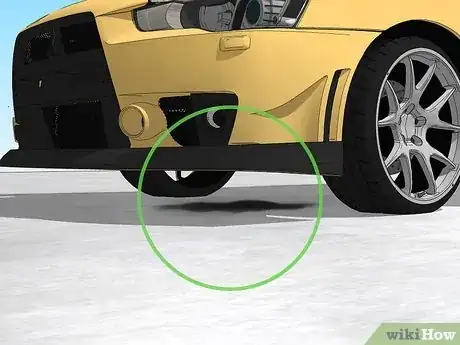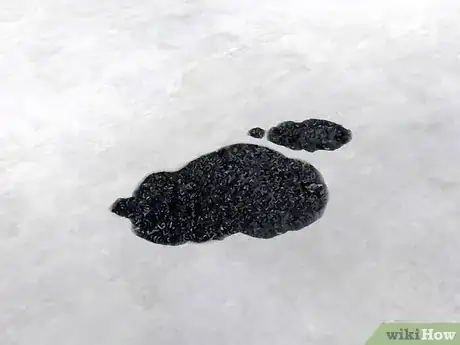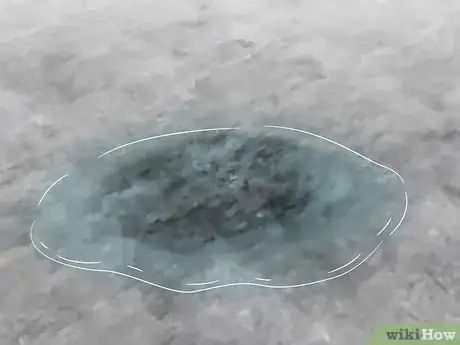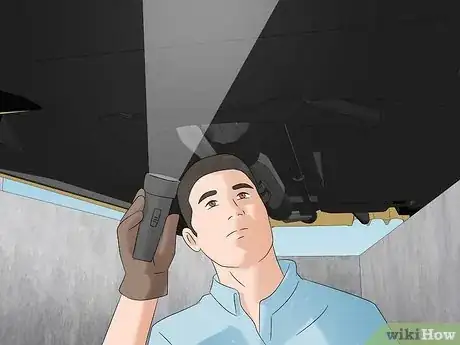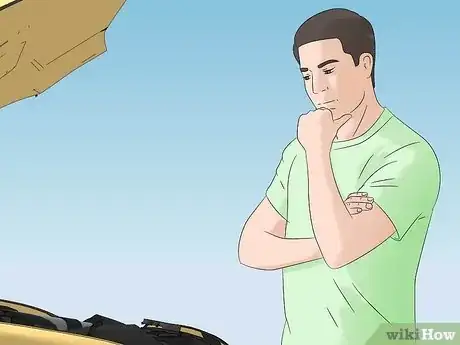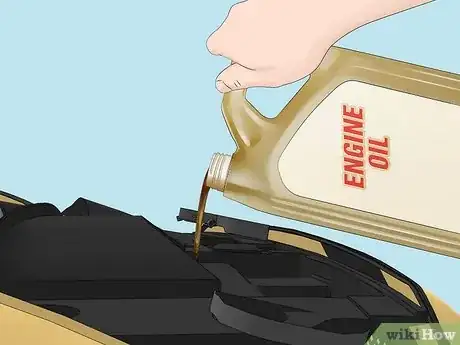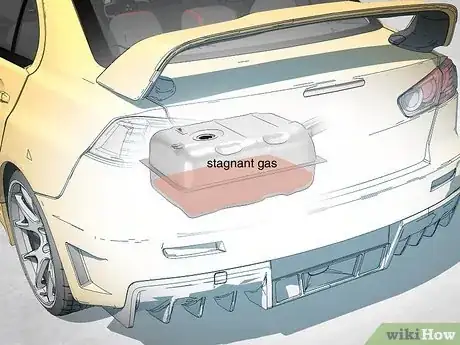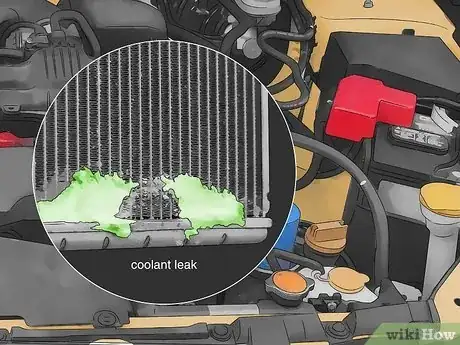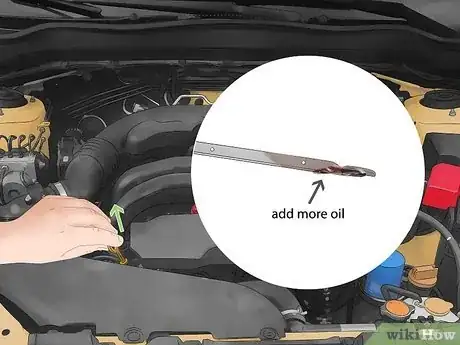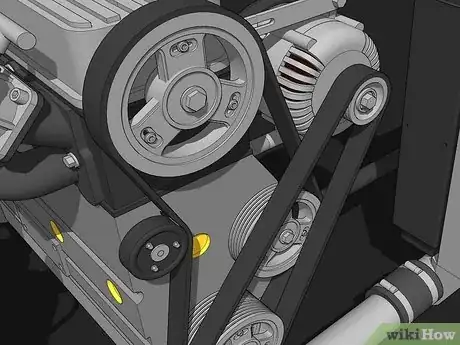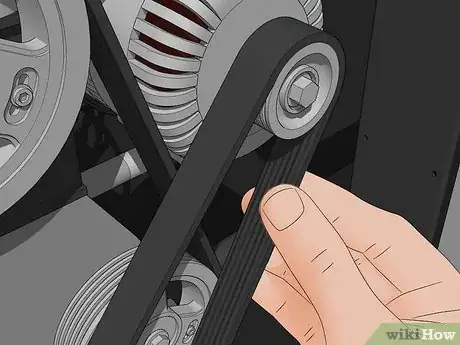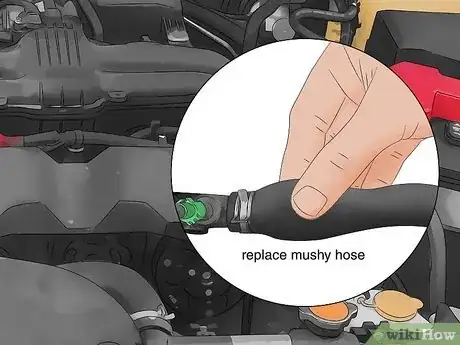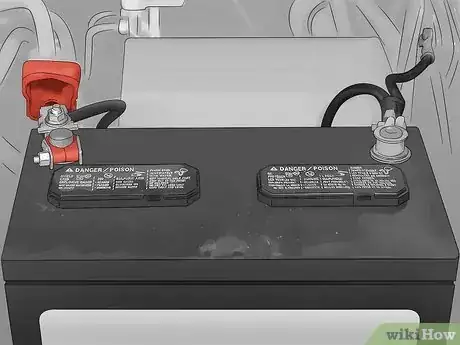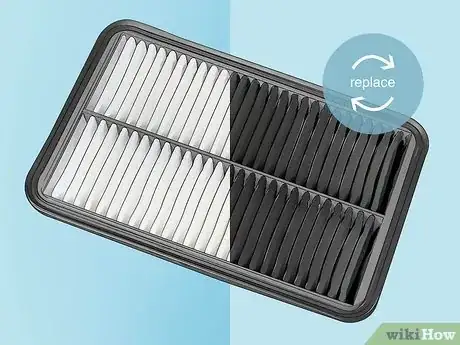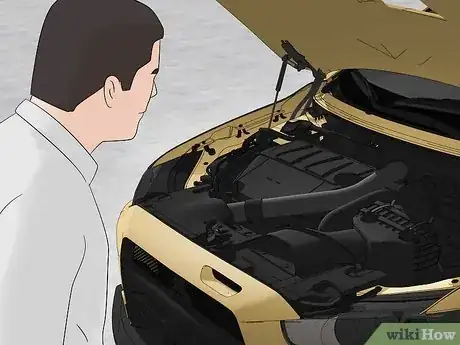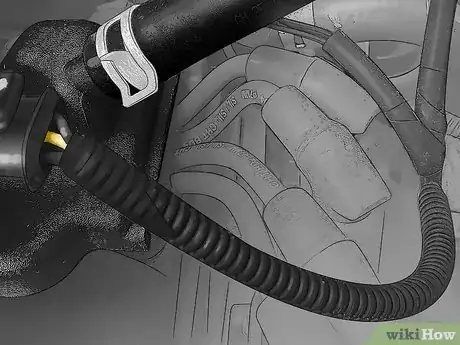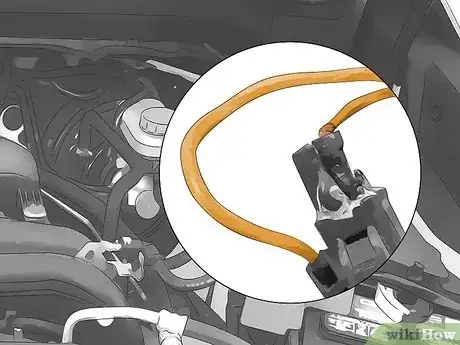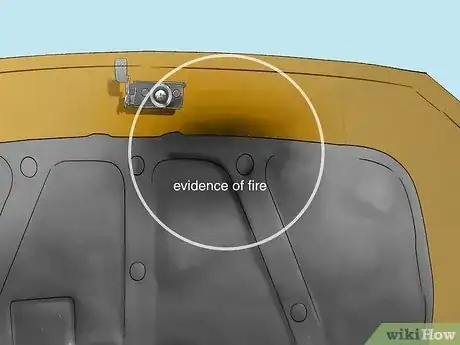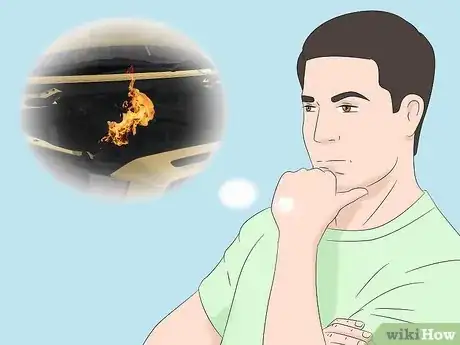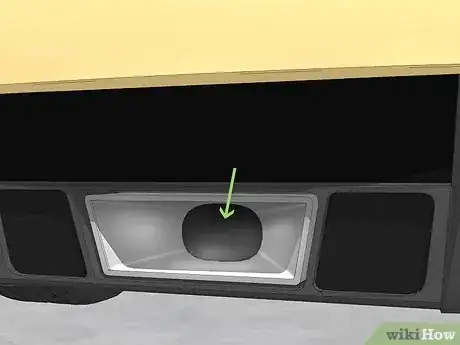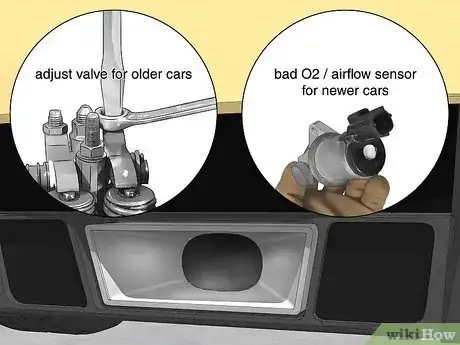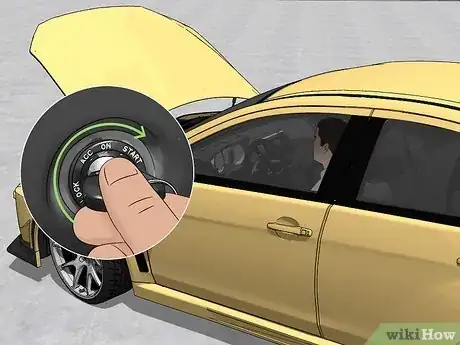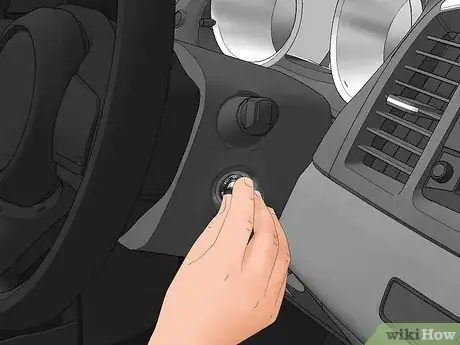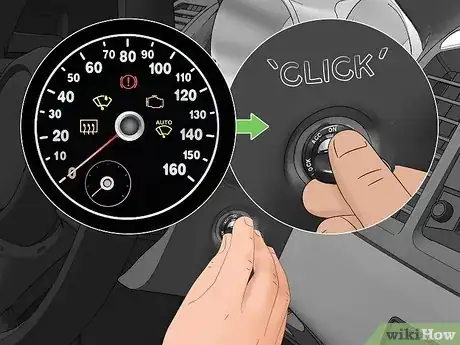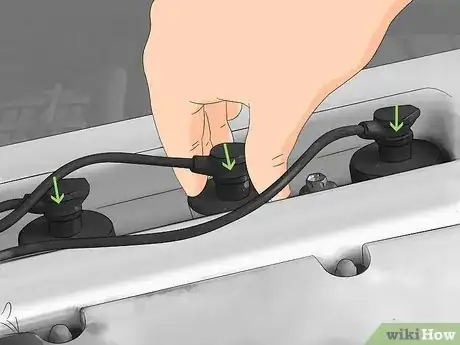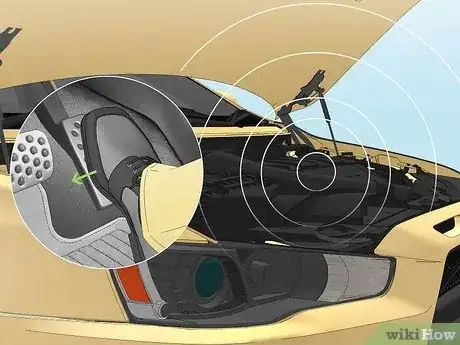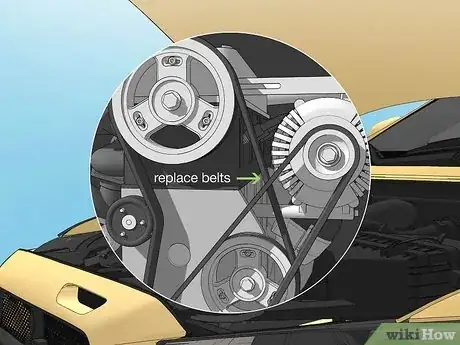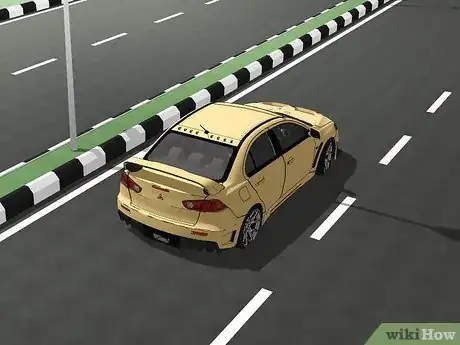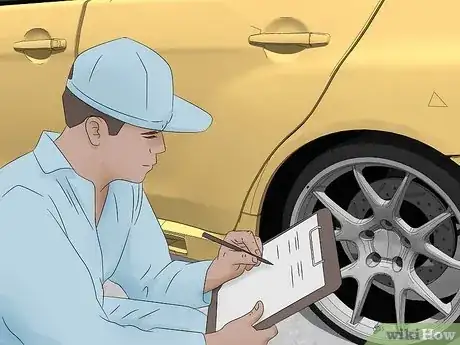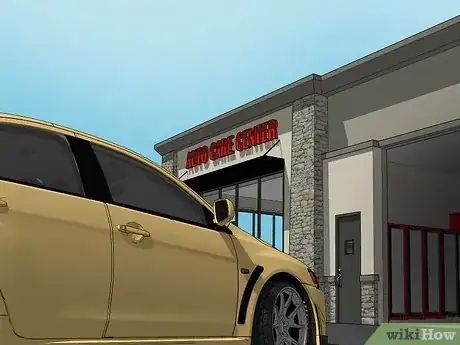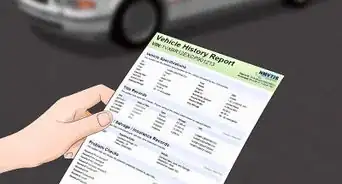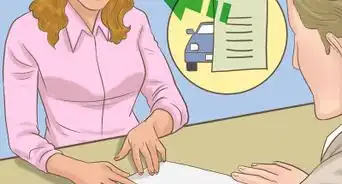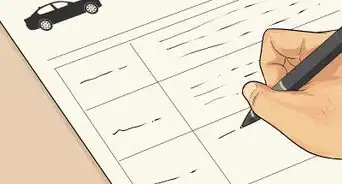This article was co-authored by Duston Maynes. Duston Maynes is an Automotive Repair Specialist at RepairSmith. Duston specializes in leading a team that handles a variety of automotive repairs including replacing spark plugs, front and rear brake pads, fuel pumps, car batteries, alternators, timing belts, and starter motors. Duston holds an Associate’s degree in Automotive/Diesel Technology from The Universal Technical Institute of Arizona and is a Certified Diagnostic Technician and Automobile Mechanics Technician through BMW STEP. RepairSmith received The 2020 Big Innovation Award by Business Intelligence Group and The Startup of the Year by the American Business Awards. RepairSmith was also included in Built in LA’s 50 Startups to Watch and The Business Intelligence Group’s 52 Names Leading the Way in Customer Service. RepairSmith offers in-home services to provide car owners convenient and complete auto repair everywhere.
There are 9 references cited in this article, which can be found at the bottom of the page.
This article has been viewed 58,841 times.
Nobody has ever sold a car because it ran too well, or was too cheap to maintain, and you have to keep that in the back of your mind at all times when looking at used cars, no matter how much you may have fallen in love with it from a distance. However, "used" does not mean bad - in fact, even very old cars can still be perfectly sound if well cared for. Before you reach for your wallet, though, you'll want to use your head and make sure you're not making a purchase that you'll immediately regret. First and foremost, you need to look at the engine.
Steps
Getting Started
-
1Check for spots, drips and puddles underneath the car. Before you so much as peek in the window, get down on one knee and check the ground for underneath the car for spots, drips or puddles. If they are there, try to figure out their age - are they old oil streaks or fresh spots? Perhaps there's even a puddle that has an active drip filling it from above?[1]
- Take a look, and decide whether this car just accidentally parked over an old spill, or if it is losing precious fluids right before your eyes. Although this is not always a deal breaker, any kind of drip, ooze, leak or seep can be indicative of much larger problems.
-
2Hire an experienced technician for inspection. Such professional could spot the hidden mechanical abnormalities in a used vehicle and could aware the buyer about it.
- Dealers and owners will tell you that a little oil seepage is normal and this is partly true - some makes and models are notorious for leaking oil, but that doesn't mean that the car is in trouble. It's just up to you whether you think it's worth it to occasionally have to add oil.
Advertisement -
3Identify what type of fluid any puddles are made from. Puddles can also be made from brake lines, cooling systems, transmissions, power steering or even washer fluid. If you find a wet spot, you might want to poke it with your finger.[2]
- Reddish fluid is probably transmission fluid. Black fluid is generally just old oil. Caramel is the color of fresh oil, or old power steering or brake fluid. Green or orange fluid is probably coolant.
- Be mindful of clear puddles, which might be just water, meaning it rained, the engine was washed or the A/C has been running recently. Once you have some on your finger tip you should be able to tell if it is oil or water-based. If it seems like both, look out, and pay more attention in the following steps.
-
4Inspect the undercarriage. Sellers will often take a hose to a car they want to sell, and some will even try to clean up the engine compartment, but just as a rule, the underbelly of the car will be overlooked. Puddles or no, look to see how clean things are. You can probably ignore plain old dirt, and even expect to see a certain amount of road grime and greasy spots (It's a car, after all) but you'll want to watch out for drips or beads of fluids that have formed but not yet dropped.[3]
- Keep an eye out for wet spots, dark spots, and clumps of filthy oily sludge, paying close attention to the oil pan, and any seams or gaskets you can spot. It is not uncommon for there to be a little grime leftover from past issues that have since been fixed.
- However, fresh, wet grime or oil can mean problems, so take note of what you see. Don't hesitate to poke at things (maybe use a paper towel) to see how drippy, wet, slimy, or caked on they might be.
-
5Decide whether leaking is a problem for you. If you do see drips or runs of wet sludge, try to sort out where they are coming from. Leakiness might be enough to get you to move on to the next car in the lot, but it will be up to you to decide if leaks alone are enough of a problem to prevent you from buying the car.
- Some folks will happily add oil to make up for a drippy oil pan, and can go for years without any serious repercussions beyond the expense and inconvenience of it. Some leaks are minor, and can take months to add up to significant losses, while some get progressively worse and can lead to real problems.
- If nothing is obviously leaking, dripping, or caked over with sludge, you can start feeling confident. A great number of potential engine problems can be ruled-out just by there being no visible loss of fluids.
Inspecting the Engine
-
1Pop the hood and take note of any smells coming from the engine. Before you ever even start the engine, have your seller pop the hood for you, just so you can have a look at the engine and take note of any smells.[4]
- A pristine, shiny new engine should smell of rubber and plastic with a hint of gas or oil. In the best of all possible conditions, you will smell fumes that naturally come off belts, hoses, and the various plastic parts. This is called outgassing, and is completely normal. The smell of an engine compartment should not be too different from the smell of new tires.
- In a used car, you will almost certainly smell oil. This is normal, and so long as it isn't overwhelming, it's not something you need to be afraid of. You may also smell gas. A whiff of it is perfectly normal, and in older cars with carburetors, even a good solid waft of gas-imbued fumes is not an uncommon thing. However, if you are smelling a lot, that might mean a leak in the fuel system and could be a cause for concern.
- You may also smell turpentine, which is essentially the smell of bad, old gas. That smell might mean the car has just been sitting for a while. You should be able to ask your seller if there is fresh gas in the tank, and how long the car has been sitting for. This is not usually a huge deal, but stagnant gas can cause problems, up to and including rust in the gas tank.
- Another possibility is the sickly sweet smell of antifreeze. This could just be from spills, but you'll still need to check for leaks in the cooling system. On a cold motor, these can be spotted by a white-to greenish film; a sign that coolant has evaporated. An acrid, tart smell may also be present, which will indicate a need to take a closer look at the battery at some point.
-
2Take a long look at your engine compartment and its contents. Take a look at the engine. Do you see paint? Bare metal? Gunk? Dirt? Keep in mind that it may be preferable to see dirt or even cobwebs. Dealers and sellers will often clean up an engine compartment both to be courteous, and to make it look nice This does make the engine look better, but it can remove evidence of leaks, and even steer your eye away from obvious flaws.
- A dirt covered engine, on the other hand, will show you where every drop of oil or gas has been, will show you which parts have been tinkered with or replaced (clean spots), and also indicates that the car has been driven, which means it has at least recently been working. Cobwebs tell you that it's been sitting a while, which may mean nothing, or may mean extra steps later on.
- A sludge-caked, grimy engine is a good and a bad thing. It an indicate a leak, but at least you can locate the source of the leak by following the path of the sludge. If it's just a heap of sludge and blackened goo, it may be time for new gaskets, or even a rebuild.
- However, this does not mean that the engine itself has gone bad, nor even that you won't be able to drive it for years before having real problems. A fuel leak will often actually create a clean spot on an otherwise dirty engine, but usually fuel leaks are fairly subtle, and you'll need to use your nose to know if they actually exist.
-
3Check the fluid levels. By now you will have stumbled across your oil dipstick. Pull it, clean it off, put it back, pull it again. Is there oil? Good. At this point, the oil can even be low, so long as there is some in there. Most cars will not show correct oil levels unless they are warm.[5]
- If you have an automatic transmission, there is another dipstick in there, so you should check this too, using the same remove/clean/replace/remove method. Again, you just want to be sure that there is some transmission fluid in there.
- If you have power steering, there will be a pump in there somewhere. Usually this pump just has a lid with a small dipstick. Check to make sure that there is at least some fluid in there. Also check your brake fluids, while you are at it. Usually your brake fluid reservoir is translucent, and you can see without opening anything where the level is.
- Finally, you should also check the coolant levels and the washer fluid levels. Take note of anything with low levels, and remember if you end up buying this vehicle to top everything off to its appropriate levels.
-
4Inspect the belts and hoses. Ask your seller when the car's belts and hoses were last replaced. Cracks in the rubber most likely means that these parts will need to be replaced soon. A clever clean-up, and even old ratty belts and hoses can look fine on the surface, so don't be shy about reaching around in the engine compartment, squeezing hoses and plucking at belts.[6]
- If the belts are a little shoddy, just keep in mind that these will need to be replaced. Most dealers will have made an assessment of such problems, but you aren't necessarily working with a dealer, and these things sometimes get overlooked.
- Mainly, you just need to make sure that there are belts in there. Some cars won't start without them, but some have second belts that charge things or let your A/C and power steering work, so do be sure that every pulley you see has either a belt attached or a good reason not to have one.
- Check for soft, mushy cooling hoses, which is a clearer sign of age than their outward appearance. Check the areas where the hoses attach to things, and look for the telltale film of hot leaks. These leaky spots sometimes only develop when engines are hot, so there won't be any dripping, and a good dose of engine cleaner can make them vanish, so you do need to really look to see if there is even a trace of residue, not unlike the hard water scaling you sometimes have to clean from your teakettle.
-
5Inspect the battery and terminals.Like the engine, batteries and their cables can clean up nice and still be bad. It's not uncommon at all for used cars to drain their batteries as they sit, so don't be discouraged if the car needs a jump start at some point.[7]
- For now, take a look at the battery itself to be sure it isn't cracked or leaking. Look for exposed cable, which is not terrible as long as it has not turned green, or become caked in white residue.
- Look for white (or green, or green/white) residue caked on the terminals as well. Usually this is just a sign of an aging battery that has been sitting a while, and can be cleaned up with a toothbrush and some soda water, and a toothbrush.
- Again, the best possibility is a layer of regular old dusty dirt, on otherwise clean metal and plastic. This doesn't mean it's a good battery or that the terminals aren't corroded in a way you can't see, but it does mean that no such potential problems have been hidden by an auto detailer's hard work.
-
6Ask about the air filters. If you are buying a car from a dealer, the air filter should be clean and new. If you're buying from a person, it could be old and dirty and need replacing.
- If the air filter needs replacing, it is likely that more (if not all) of the filters (such as the oil, gas, cabin air, transmission filters) are due to be replaced as well.
- Ask your seller if you aren't sure or if you don't want to dig into the air filter to see for yourself.
-
7Make sure the turbo is connected and not rusty. If the car has a turbo charger, that's likely something you won't be able to diagnose until the car is running. However, at the very least you can check for leaks and make sure it is connected and not rusted through.
-
8Step back and look at the engine compartment as a whole. Step back and take a wide view of the engine compartment and its various goings-on. Every make and model has a different setup - there might be a lot going on, or it might be a fairly common and simple situation.
- Look for loose wires and hoses. Look for little things that you might not understand, but look off to you, like uncovered holes or potential missing parts.
- Newer cars are harder to sort out, what with electronics (look for scorches, burns, obvious damage) and complicated vacuum systems.
- Older cars are simpler, and are more forgiving of after-market tampering. Discuss any changes or modifications your seller has made.
Making the Final Checks
-
1Look at the underside of your car's hood. Stop and take a closer look at the underside of your used car's hood. There are clues there, if not always clear indicators. What you want to see is a clean, (again, regular dirt is not a problem) and intact liner, which is there to muffle engine noise and also to act as a fire retardant.
- A sludgy, leaky, oil-burning car might have blackened the liner. If the underside of your hood is just darkened, it's likely not a problem, but if any part of it is scorched, burned, or has been torn away or removed, that's a sign of a past engine fire.
- If you find evidence of fire, ask when and how it happened, and you may find that the engine has been rebuilt, in which case you just want to be concerned about any current leaks of fuel or oil.
- A past engine fire should at the very least make you wary, but even such a sordid history does not by itself mean the car is simply no good.
-
2Examine the exhaust pipe. Exhaust leaks are one of the things that can cause engine fires. You might not have a good view of the exhaust manifold in the engine compartment, but it's easy enough to check the tailpipe. The exhaust tip should be ashy grey on the inside.
- If it is black on the inside, this means that the car has been running rich (too much gas in the air/fuel mix), which is bad but not terrible, and usually just means poor fuel economy. White tips mean the car is running lean (too much air in the air/fuel mix), which makes for increased wear and tear, and a hot running engine.
- In older cars this is a problem of timing and valve adjustment. In newer cars it indicates something wrong in the electronics; usually an O2 sensor, or perhaps an airflow sensor, sending inaccurate information to the computer, which then makes errors in regulating the mix. Either way, problems with the exhaust pipe will require a tune up.
-
3Test the car to see if it starts. So you've looked and sniffed and poked and grabbed, and nothing has scared you away thus far, so nothing to do but fire the car up and see if it goes. Three things could happen.[8]
- It starts and runs, first try.
- It takes a minute to get it going.
- It doesn't start.
-
4Figure out why the car won't start. You turned the key and nothing happened? Not so much as a dash light? Check the battery, and connections. Pay particular attention to the terminals, and make sure the cables are connected good and tight, and not corroded. Again, a little soda will help get these clean enough to keep a good contact.
- Dash lights come on, you turn the key and then you hear a click, followed by nothing? Still probably just a dead battery, or even just a bad connection. Check it and charge it. Pull it out if you have to, or use jumper cables. The best practice is to remove the battery, connect an AC powered charger, and give it some time.
- The engine turns over, but does not start? Give the gas pedal a good stomp, wait a few seconds, and try again. Pump the gas pedal as you turn it over. If this doesn't work, continue to try a couple more times. If the car has been sitting, it may just take some time for good fuel to be pumped from the tank to the engine. With any luck it will catch at some point and you'll likely not have to do that again.
-
5Take a look at your spark plug wires. If nothing is happening still, make sure the spark plug wires are snug. If you find a loose one, get it snug, and try again to start the car.
- Still nothing? You will probably have to pull the spark plugs and clean them. If the car has a carburetor, you can also try dumping a few teaspoons of gas straight into the venturi (the part where the air goes in).
- This whole process sometimes has to be repeated, just to get the engine going after a car has been parked for a substantial amount of time. On that note, if you have a car sitting around and want to sell it, start it up once in a while so this doesn't happen.
-
6Listen to the sound of the engine once you get it running. Once you get the car running, get out and let the car idle while you look around the engine compartment again, and look for things smoking or leaking. Listen for wheezing, clicking, knocking or thumping sounds. Sniff for gas fumes (there will be a little) or burning (there might be some). Here are something you may hear, and suggestions as to what they might mean:[9]
- "TicTicTicTicTic" noise, increasing in speed as you rev the engine. Sticky lifters, flat cams, loose valves, and even a loose belt can do this. If it goes away after you add oil, or after the car gets good and warm, that's a lifter. Although it's nothing to panic about, it's something you'll want to address at some point in the future.
- A "NokNokNokNok" noise that increases in frequency when the engine is revved is called an engine knock. This can be bad news and might be a sign that you should walk away from this particular car (unless it's a diesel, in which case this is exactly how it's supposed to sound).
- Squealing, shrieking, squawking? This is usually the belt, or belts, and sometimes the pulleys that they turn on. Plan to change the belt. If the noise continues after changing the belt, you'll need to figure out which pulley. Alternators and air conditioner pumps can make these noises too, and can also just make scraping noises. Be mindful of such sounds, but unless they really start to bother you, don't worry too much.
- A louder knock which does not match RPMs but may be present while accelerating or at low idle might indicate an engine or transmission mount that needs to be replaced. Not an emergency, but you'll want to get that fixed too, at some point.
-
7Bring the car for a test drive. Everything seem good? Close the hood, and if you are taking a test drive, take it straight to your local auto parts store and have them connect and check codes for other little things you might not have noticed. This only applies to cars from the 80s and later, and usually only helpful if there is a check engine light on after you start.
- Your parts guy or your mechanic can help you out from there. You've done pretty much everything you need to do to be sure your engine is at least sound enough to get you to the store. As you drive take note of any issues such as a distinct lack of power, any odd shuddering, or any other sort of odd behavior.
- The code reader can give you some details to get you started on the process of replacing parts and electronics and getting things tuned in. Your local auto parts counterman has a device that can check your car's computer codes, and most will do it for free if they have the time. If someone tries to charge you for a checkup, drive on down to the next place.
- You might need a tune up, or even a rebuild. If you made it this far, though, you have a working engine. Congratulations. Your fluid levels filled, your battery charged, good gas in the tank, and you're driving. See how it feels - in the end that's what's important.
Community Q&A
-
QuestionI had a pulley replaced on my car, and now it shakes when I drive. What does this mean?
 Mike LenciCommunity AnswerThe new pulley may be bent or loose. A loose pulley will cause the belt to shake and vibrate.
Mike LenciCommunity AnswerThe new pulley may be bent or loose. A loose pulley will cause the belt to shake and vibrate. -
QuestionI have a 55 Chevy 210 and I want to clean the metal air filter. How do I do that?
 Auto PartsCommunity AnswerVacuum around the furnace with a wet/dry vacuum or the hose attachment on your upright vacuum. Take out the air cleaner from the furnace and sweep up as much dust and debris as you can. If you vacuum before wetting the filter, the dust and dirt can turn to mud and be difficult to clean. Spray the air filter with water. For this, a kitchen sprayer works well; if the weather is wet, a garden hose may be used to remove any residual particles. Wash both sides of the filter with a mild detergent such as dish soap. Rinse the dish thoroughly. Dry the filter as thoroughly as possible with a dry cloth or paper towel. Then air-dry the filter until it's fully dry.
Auto PartsCommunity AnswerVacuum around the furnace with a wet/dry vacuum or the hose attachment on your upright vacuum. Take out the air cleaner from the furnace and sweep up as much dust and debris as you can. If you vacuum before wetting the filter, the dust and dirt can turn to mud and be difficult to clean. Spray the air filter with water. For this, a kitchen sprayer works well; if the weather is wet, a garden hose may be used to remove any residual particles. Wash both sides of the filter with a mild detergent such as dish soap. Rinse the dish thoroughly. Dry the filter as thoroughly as possible with a dry cloth or paper towel. Then air-dry the filter until it's fully dry.
References
- ↑ https://lifehacker.com/6-common-fluids-that-can-leak-from-your-car-and-how-to-1493902758
- ↑ https://lifehacker.com/6-common-fluids-that-can-leak-from-your-car-and-how-to-1493902758
- ↑ https://www.samarins.com/check/engine.html
- ↑ https://www.samarins.com/check/engine.html
- ↑ https://www.consumerreports.org/cro/news/2008/12/car-care-five-fluids-to-check/index.htm
- ↑ https://www.consumerreports.org/cro/2012/12/inspecting-a-used-car/index.htm
- ↑ https://www.consumerreports.org/cro/2012/12/inspecting-a-used-car/index.htm
- ↑ https://mechanicbase.com/cars/inspect-a-used-car-before-buying/
- ↑ https://mechanicbase.com/engine/engine-noises/
